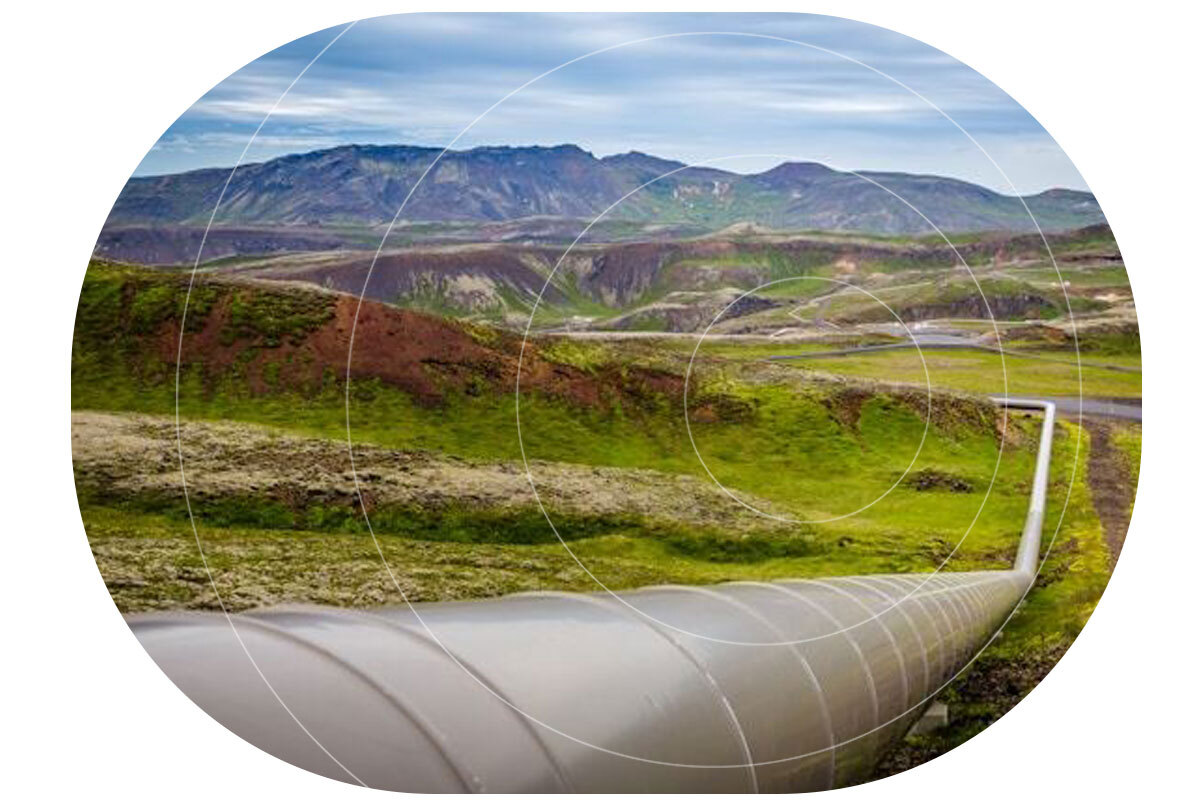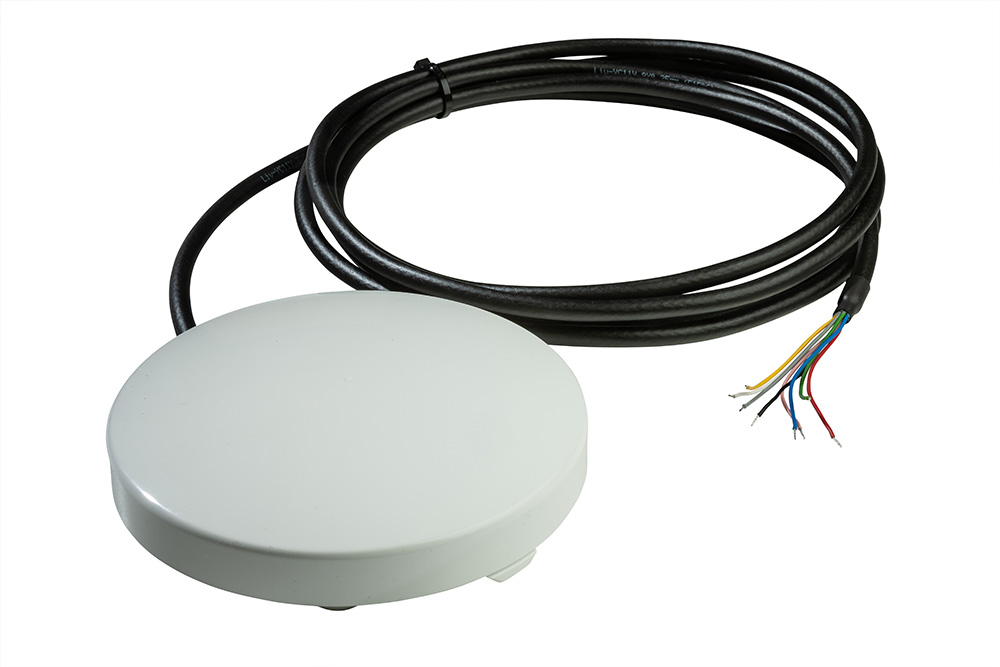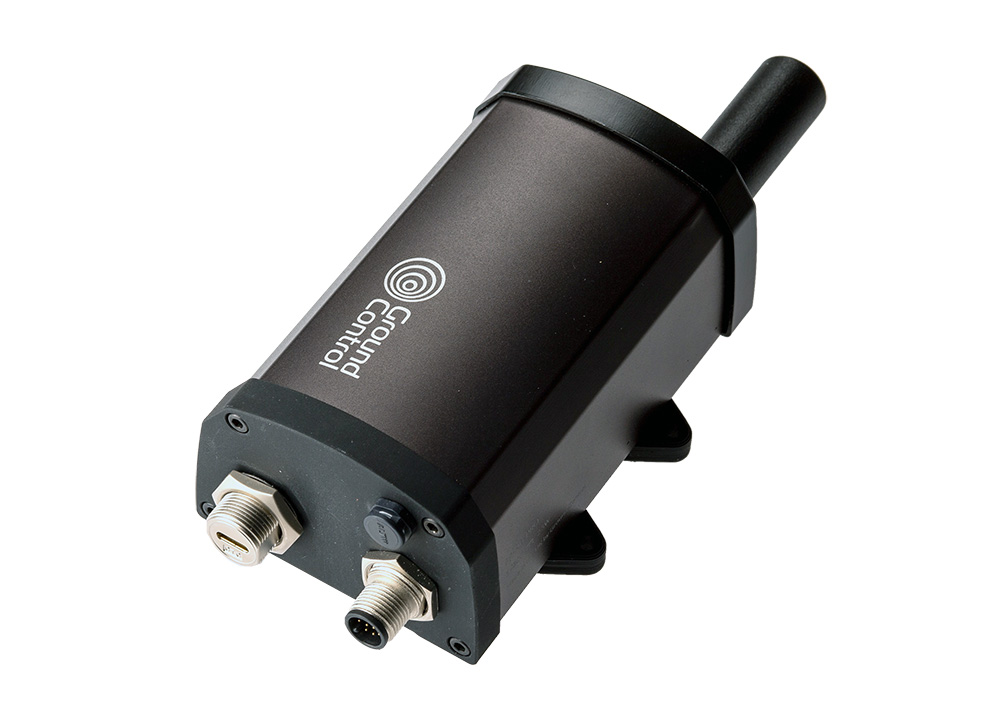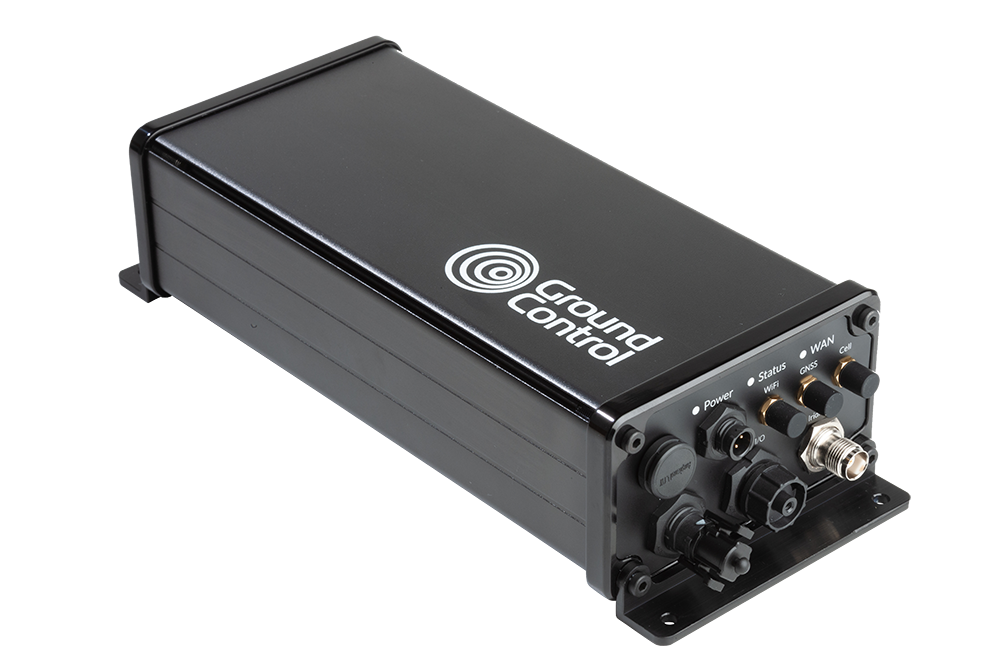Pipelines stretch thousands of miles, transporting oil, gas, water, and chemicals across diverse terrains, including mountainous areas, deserts, and offshore waters. They are essential infrastructure, but monitoring such vast and inaccessible pipeline networks presents a unique challenge and when leaks or failures go undetected, the consequences can be severe to both the pipeline operators and the environment.
Satellite-enabled IoT is an increasingly viable solution. By linking sensors directly to a global network of satellites, operators can achieve 24/7 data monitoring with zero dependance on terrestrial networks. With satellite IoT, pipeline operators can continuously monitor pipeline health, detect anomalies in real time, predict maintenance needs, and even act remotely to prevent minor issues from becoming costly disasters. Pipelines will always cross remote places, but with satellite IoT, those places no longer have to be blind spots.
Here’s why pipeline health monitoring is critical, and how selecting the right satellite IoT network and device – from low power sensors to real time control systems – can help operators protect remote infrastructure and prevent costly failures.
Why Remote Pipelines Need Satellite IoT
Traditional pipeline monitoring methods rely heavily on cellular networks or fixed wired systems. Both approaches work well where infrastructure is dense and coverage is consistent, but pipelines rarely follow such convenient paths. They cross deserts, mountain ranges, wetlands, and offshore environments where terrestrial coverage is patchy at best and, in many cases, does not exist at all. Wired systems, meanwhile, are expensive to install and maintain over long distances, particularly where terrain is unstable or hostile.

Coverage gaps create serious risks, as even a small leak in an isolated section of pipeline can go undetected for days, releasing oil, gas, or chemicals into the surrounding environment. In many cases, this not only carries the cost of remediation but also heavy regulatory penalties and reputational damage. Even when problems are eventually identified, the time lost between the first failure and the response often magnifies the scale of the incident.
Unplanned downtime is another consequence of limited pipeline monitoring. When equipment fails without warning, operators are forced to take entire sections of pipeline offline while they diagnose and repair the issue. This is disruptive and costly, especially in industries where margins depend on continuous flow. Coverage gaps also limit the effectiveness of predictive maintenance, forcing operators to rely on scheduled inspections or reactive repairs that drive up costs and increase vulnerability.
Further, there are safety implications. When a fault occurs in a remote environment, personnel are dispatched into difficult and sometimes hazardous conditions with limited information about what awaits them. This not only puts people at risk, but it also slows the time to resolution. Ultimately, terrestrial connectivity is not sufficient to monitor, manage, and ensure pipeline and personnel health in the mostremote areas.
The Cost of Connectivity Gaps in Pipeline Monitoring
In March 2006, more than 200,000 gallons of crude oil spilled onto the Alaskan tundra from BP’s Prudhoe Bay pipeline; the largest oil spill ever recorded on the North Slope at the time. Investigators traced the leak to a ¼-inch hole caused by internal corrosion in a section of pipeline that had not been inspected for years. With limited monitoring in this remote environment, the corrosion went undetected until it caused a catastrophic failure. The consequences were immediate: U.S. domestic oil production dropped by nearly eight percent, cleanup costs ran into the hundreds of millions, and regulators imposed heavy fines.
A similar pattern has played out elsewhere. In 2017, a crude oil pipeline in India ruptured along a hidden seam defect despite having undergone periodic inline inspections. Without continuous monitoring, the defect went unnoticed between inspection intervals, ultimately leading to a major spill and disruption to local communities and infrastructure.
These cases illustrate how gaps in visibility – whether caused by lack of network coverage or the limits of periodic inspections – can turn slow-building problems into headline-grabbing disasters. In remote areas where traditional cellular or wired networks simply don’t reach, operators are left to rely on sporadic checks, leaving too much room for failure.
How Satellite IoT Bridges The Connectivity Gap
Satellite IoT bridges the connectivity gap in pipeline monitoring, eliminates blind spots, and addresses pipeline vulnerabilities. Here’s how:
1. Detecting Anomalies Before They Escalate
The earliest signs of issues within a pipeline can be subtle – a slight pressure drop, a shift in temperature, or a vibration outside normal range can all indicate the beginning of a leak, corrosion, or interference. Continuous sensing makes these small deviations visible, but visibility is only useful if the data can reach operators without delay.
In regions with reliable terrestrial networks, that flow of data is relatively straightforward. In remote terrain, a sensor may detect a problem, but without connectivity, the information stays in the field. By the time operators and inspectors reach the pipeline, days may have passed and a minor leak may have spread into soil, waterways, or communities. The result is a much larger clean-up, higher costs, and often regulatory scrutiny. This is where satellite IoT changes the equation. Data from remote sensors is transmitted securely from any location on Earth with a clear view of the sky. Operators have complete visibility in near real time and can act on the first sign of irregularity.
2. Predictive Maintenance with Data Intelligence
Pipelines and their supporting equipment degrade gradually over time; bearings loosen, pumps vibrate, and valves begin to stick. If these changes go undetected, the first sign of trouble may be a breakdown, forcing operators to react after the fact by dispatching crews to remote locations at short notice and losing valuable supply time. Research shows that failures in critical components like bearings and pumps are among the leading causes of unplanned downtime in industrial systems, particularly when early warning data are scarce.

In areas without reliable connectivity, operators often rely on fixed inspection schedules, replacing components whether they need it or not, or worse, leaving them in place too long, which raises the risk of failure. This approach means maintenance decisions are based on limited information rather than real time insights into the pipeline’s actual condition, a problem well documented in studies of condition-based maintenance and industrial IoT. As a result, organizations remain stuck in a reactive cycle, facing higher costs and greater operational vulnerability.
Satellite-enabled predictive maintenance works differently. By streaming live sensor data into analytical systems, operators can recognize patterns that signal when a component is beginning to deteriorate. A pump running hotter than usual, or a valve that opens more slowly than before, triggers an automated early warning. Pipeline maintenance teams can then be dispatched to service the specific section of pipeline that needs maintenance, at the right time, rather than covering hundreds of miles in search of faults that may or may not exist.
Satellite IoT makes this approach viable even in the most remote environments. Reliable, global satellite coverage ensures that predictive platforms always receive the data they require, so operators are no longer forced to choose between over-servicing their pipelines and risking unexpected failure. They can maintain only what requires intervention, extend the lifespan of their assets, and minimise downtime. This leads to safer operations, more cost-effective maintenance, and fewer unexpected failures.
3. Monitoring and Control from Afar
Detecting issues in pipeline health is only half the battle. As most pipelines stretch across some of the most inaccessible terrain on earth and beyond cellular reach, operators are forced to rely on field teams reaching the site before remedial action can take place, and that delay can be costly. A leak may continue unchecked for hours or days and valuable time can be lost while crews travel long distances with limited information about any issues.
Satellite IoT enables remote actuation, allowing pipeline operators to send commands instantly to equipment in the field, closing valves, adjusting pumps, or isolating sections of pipe as soon as a problem is detected. A pressure sensor signalling a sudden drop can trigger an immediate response from the control room, instead of waiting for a maintenance team to drive or fly to a remote location. The technology not only directly reduces the scale of spills but also shortens downtime and improves safety for field personnel. Pipeline engineers are no longer dispatched into hazardous conditions to perform urgent manual interventions and instead, they can attend the site to carry out targeted repairs under safer, more controlled circumstances.
Without satellite-enabled actuation, pipeline operators remain vulnerable to longer response times and escalating incidents in remote regions. With it, they gain the ability to contain risks immediately, keeping both pipeline infrastructure and the surrounding environment safer.
Choosing the Right Satellite IoT Solution
Every pipeline is different. The right connectivity depends on how much data you need to transmit, how often you need to send it, and how critical it is to have immediate, two way communication. Here’s a quick guide to help you decide where to start.
For Low Data Volumes and Periodic Updates: NTN NB-IoT
If your sensors only need to send small packets of data, and the problem won’t escalate if readings are sent a few times per day (e.g., 8-12 transmissions), NTN NB-IoT is a cost-effective option.
Best for environmental monitoring, slow changing metrics like temperature, pressure, or flow trends, and non-critical maintenance data.
It’s important to remember that this is emerging technology, and coverage is still expanding, so availability varies by region. Further, because the service is currently delivered by Viasat, whose satellites are in Geostationary orbit, sensors need direct line of sight to the satellite, which can be a challenge in heavily forested or mountainous terrain.
Our recommendation is RockBLOCK RTU; designed for ultra-low power consumption and long term field deployments, making it an ideal choice for pipelines using NTN NB-IoT connectivity. It’s a flexible device that can also operate on cellular where available, and can be shipped with Iridium Short Burst Data (SBD) as an alternative satellite network, if your pipeline is not within the coverage area of the NTN NB-IoT service.


For Higher Data Volumes or More Frequent Reporting: Iridium Messaging Transport (IMT)
When your pipeline monitoring requires more frequent updates or larger data volumes, Iridium Messaging Transport (IMT) is the better fit. Its truly global coverage ensures connectivity even in the most remote environments, while its sub-10-second round-trip time makes it suitable for near real-time applications.
This is ideal for continuous health monitoring of pumps, valves, and sensors, early warning systems where immediate alerts are crucial, and remote assets that are inaccessible for long periods.
IMT supports more frequent transmissions than NTN NB-IoT and can handle a higher data load, making it ideal for situations where small, periodic updates simply aren’t enough.
Our device recommendations would be RockBLOCK Pro or RockBLOCK Plus 9704 – rugged, field-ready devices built to withstand extreme conditions and provide reliable, low power operation for continuous monitoring.
For Real Time Monitoring and Remote Control: IP-Based Solutions
For mission-critical sites where you need to both monitor and act instantly, an IP-based solution is essential. These systems enable real time, two way communication, so operators can remotely command equipment, such as closing valves or isolating sections of pipe the moment a fault is detected.
Best for critical infrastructure nodes, emergency response situations, and high value assets where downtime costs are severe.
Powered by Iridium Certus 100, these solutions deliver global coverage with very low latency, enabling near-instant response. Choose RockREMOTE Mini for a rugged tough, IP-based device which is optimized for low power draw, or RockREMOTE Rugged to take advantage of its sophisticated edge processing capabilities, and MQTT / FTP facades.

Satellite IoT gives pipeline operators the tools to see, predict, and act, even in the most remote environments. By matching the right technology to each monitoring challenge, operators can prevent minor issues from becoming disasters, safeguard their teams, and protect the environment. With the right strategy, every mile of pipeline can be monitored and managed with confidence, no matter how far it stretches.
Can we help?
Partner with us to implement satellite IoT technology that safeguards your critical infrastructure and pipeline operations.
Complete the form or email us at hello@groundcontrol.com and we’ll get back to you within one working day.
